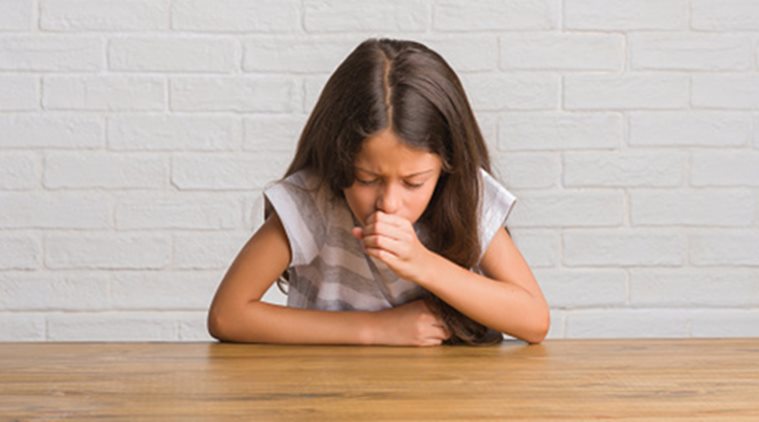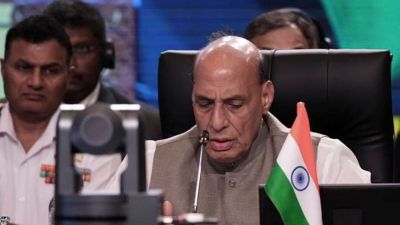Know about the common respiratory problems in kids during monsoon
Make sure children know that sitting for long in wet clothes and shoes is not good for health. If possible, have them carry an extra pair of clothes or at least a towel to dry-off.
 Respiratory infections can affect either the upper or lower respiratory tracts. (Source: Getty Images)
Respiratory infections can affect either the upper or lower respiratory tracts. (Source: Getty Images)
By Dr Suresh Birajdar
Children tend to enjoy the monsoons, considering they get to play in puddles, get wet, and stay away from school in case of heavy rains. However, with the change in weather from the sweltering heat of summer to a sudden dip in temperatures, the chances of infections increase. Monsoons bring along several infections related to the gastrointestinal and respiratory system, among others. Children especially are more prone to such illnesses owing to their carefree attitude towards the rains. Hence, it is important to educate them in the basics of monsoon care to prevent them from acquiring such infections.
Stagnant pools of water are ideal breeding grounds for parasites, such as mosquitoes. Moreover, viruses also thrive in these damp and humid conditions. Respiratory infections are common throughout the year, particularly during the transition from one season to another. However, in monsoons, these infections tend to be more severe and may cause exacerbation of pre-existing conditions. Respiratory infections can affect either the upper or lower respiratory tracts.
The influenza virus is one of the common set of organisms responsible for respiratory infections. This virus is extremely contagious and spreads rapidly through air/droplet infection. Most commonly, the virus enters through the nose and throat, affecting the upper respiratory tract. However, one may also acquire infections through other viruses such as parainfluenza, respiratory syncytial virus, adeno virus, rhino virus, S pneumonia, and H influenza.
Symptoms of upper respiratory tract infection include nasal discharge and obstruction, sneezing, sore throat, cough, fever, muscle pain and headache. Lower respiratory tract infections cause incessant cough, sputum production, chest pain, and wheezing.
Children are still in evolving phase of immunity acquisition and may not have a robust immune system. Their bodies are still acquiring immune-memory and therefore may not be able to deal with sudden fluctuations in the atmosphere and resultant microorganisms’ invasion. Add to this, their playful nature, which offers them little protection against infection causing organisms. Even if a child is healthy, the chances of contracting an infection are higher because kids may not necessarily follow safety measures on a routine basis. It is therefore necessary that parents inculcate basic hygiene practices as well as healthy eating habits in children at an early age.
Also Read| 8 ways to prepare your little ones for the monsoon
Children find it fun to get wet during rains, but this can trigger throat irritation and cold. Sometimes, this can lead to more serious respiratory infection such as cough, sputum, and ultimately pneumonia. Healing is also delayed as both bacteria and viruses thrive in such conditions for longer duration. Such infections can be detrimental to children who already have pre-existing respiratory conditions like asthma. During monsoon, asthma can be exacerbated due to superadded infections.
Moisture inside the house, trapped on walls and furniture, is a major cause of an asthma attack. Moulds/fungi can grow on such damp surfaces, which when breathed increases the risk of aggravating respiratory conditions. Children also tend to touch such surfaces and eat without washing hands, which could lead to infection.
Make sure that you clean your home with disinfectant regularly. Clean walls and doors in a similar manner. Ensure that the surfaces are as dry as possible. Use a dehumidifier to regulate the air indoors. However, also ensure cross ventilation, especially if the sun shines (no matter how brief).
Keep track of your child’s symptoms. While runny or stuffed nose, cough, and congestion may be the natural response to infections, sputum (mainly discolored, thick) should not be ignored as it may signify more severe infection. Also, look out for wheezing, breathlessness, or other abnormal breath sounds. These may be signs of an asthma attack in known cases.
Prevention and management
- Try to prevent children from getting wet. Buy good quality raincoats. Add an umbrella in case of heavy rains.
- Make sure children know that sitting for long in wet clothes and shoes is not good for health. If possible, have them carry an extra pair of clothes or at least a towel to dry off.
- Wear warm clothes that fit well but are not too tight. Allow the skin to breath. Avoid clingy fabrics. Cottons are versatile, comfortable, and can be used in most seasons.
- Teach them to wash hands and feet thoroughly with soap and water every time they return from outdoors as well as before eating. Give children plenty of water and warm drinks.
- In case of any respiratory infections, make sure you inform the doctor about exact symptoms and give your child the full course of medicines prescribed by the doctor.
- Tell your child to keep inhaler handy (in case of known cases of asthma) and ask for help, as soon as he/she feels any discomfort that may signal onset of an asthmatic attack. Talk to doctor regarding changes in medication (if any).
- If needed, give your child protective mouth-masks.
(The author is Consultant, Pediatrics & Neonatology, Motherhood Hospital, Kharghar, Mumbai)






- 01
- 02
- 03
- 04
- 05

























